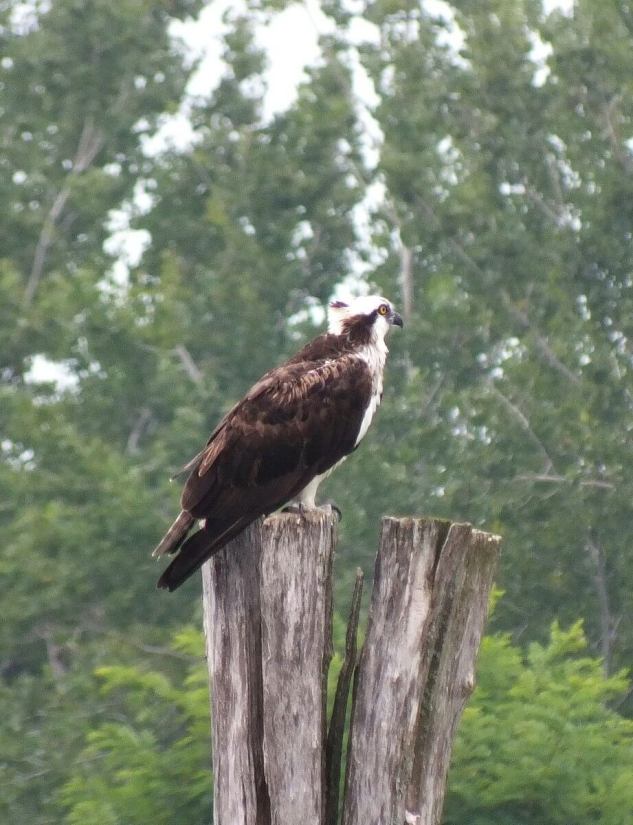Osprey At Tommy Thompson Park In Toronto
Osprey At Tommy Thompson Park In Toronto
Over the summer, Bob and I made numerous trips to Tommy Thompson Park. It all started when we went to look for Monarch Butterfly larvae. On one subsequent trip to the Park, we ventured further out on the Spit than usual and were quite pleased to find an Osprey (Pandion haliaetus) perched on a tree stump in the middle of the first large pond.
Tommy Thompson Park is one of my favorite conservation areas in the Greater Toronto Area. I love that it is so wild. In the vicinity of the pond, goldenrod, thistles and phragmites way taller than ourselves had me feeling like I was in some remote country locale. Only for a break in the overgrown plant life were we able to spot the Osprey in the middle of the pond.
Because Osprey have a diet that consists almost solely of fish, they are found near any body of water with a rich source of food. These birds tolerate a wide variety of habitats including salt marshes, estuaries, rivers, ponds and along the shores of large lakes. In fact, Osprey are found nearly worldwide with the only exceptions being polar and subpolar regions.
This powerful raptor is large with a wingspan up to 180 centimetres (71 in.) and a body length up to 66 centimetres (26 in.) long. With its deep, glossy brown upperparts contrasted by the white or greyish breast and striking dark mask across the eyes, there is no mistaking an Osprey for other birds of prey. An adult Osprey has golden or brown eyes, whereas a juvenile has orange eyes.
I was fascinated to learn that Canada supports one-third of the world’s population of Osprey, and I would guess that the endless numbers of lakes and rivers in our country, not to mention the coastlines, is the reason why. Often, it will just be a pair of Osprey that is seen together in the interior as opposed to a large grouping of these sea hawks. Given their adaptability to many different habitats, they are also called fish eagles, river hawks or fish hawks.
Bob and I crept closer to the edge of the pond in order to clear the screen of phragmites blocking our view. Even at such a great distance from us, the Osprey took note of our rustlings in the reeds. Considering their sharp eyesight that enables them to pick out a fish beneath the surface of the water from a lofty 10-40 metres (33-131 ft.) above the water’s surface, it had no trouble zeroing in on our clumsy efforts to remain hidden.
Given the timing of our sighting of this magnificent Osprey, it will likely soon be heading for South America for the winter. The bountiful selection of fish at hand has enabled it to build up its strength and endurance. The pond may be full of pumpkin seed fish that tend to be quite small, but given that we saw some fishermen heading to its shores, perhaps it is home to larger fish such as bass or perch, as well. Whatever the case may be, the Osprey can always turn to Lake Ontario. It’s just a stone’s throw away.
You May Also Like:
Gray Treefrogs At Lower Reesor Pond In Toronto
Scarlet Tanagers at Ashbridge’s Bay Park In Toronto
Razorbill Auks on Carrick-a-Rede in Northern Ireland
Brown Pelicans at San Blas, Nayarit, in Mexico











